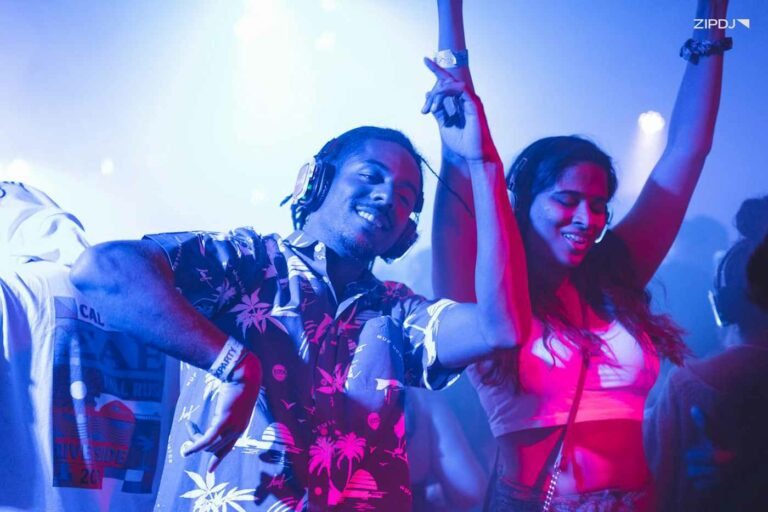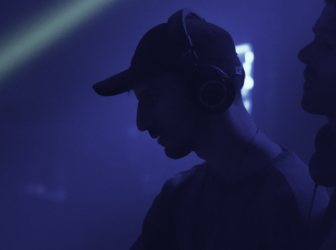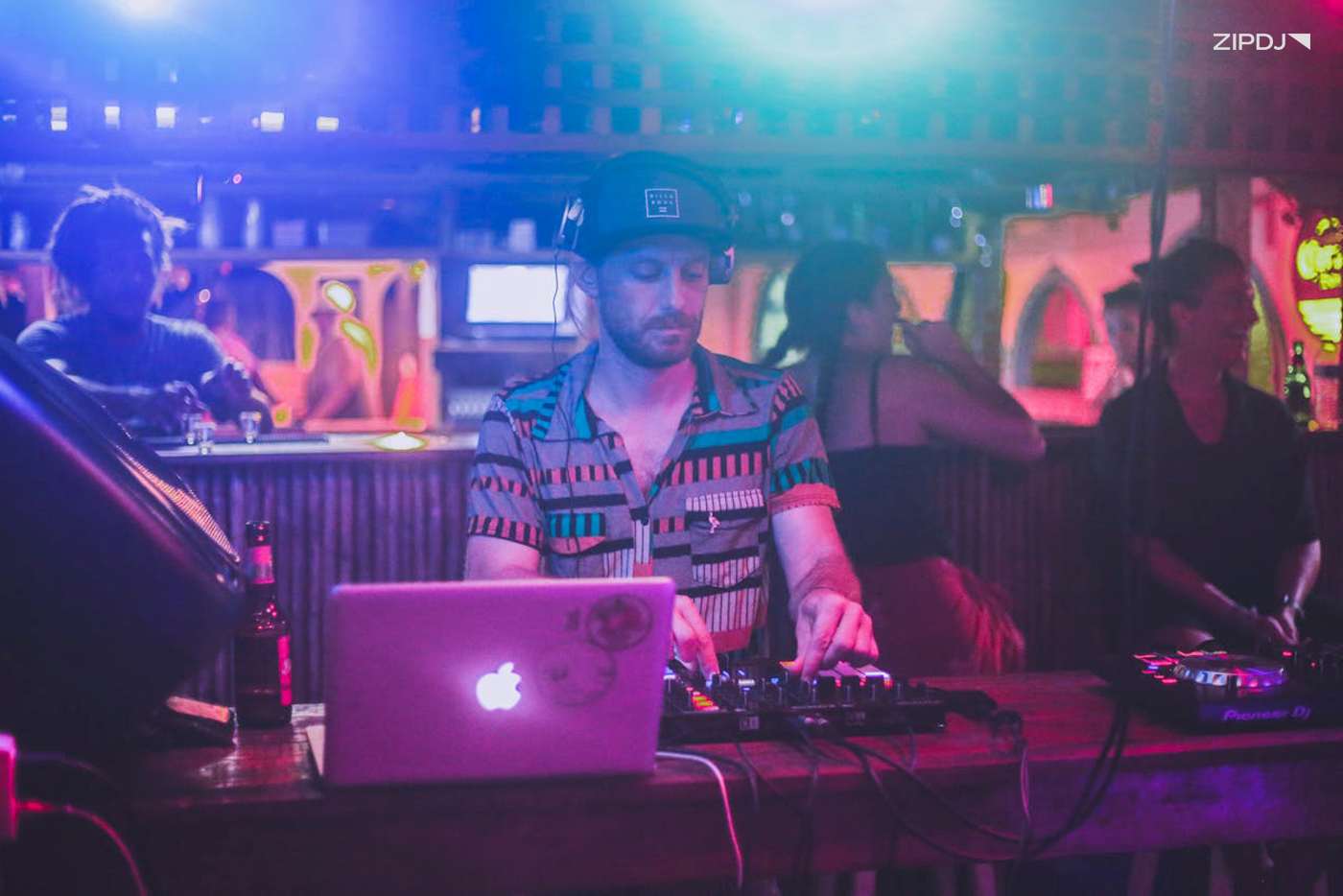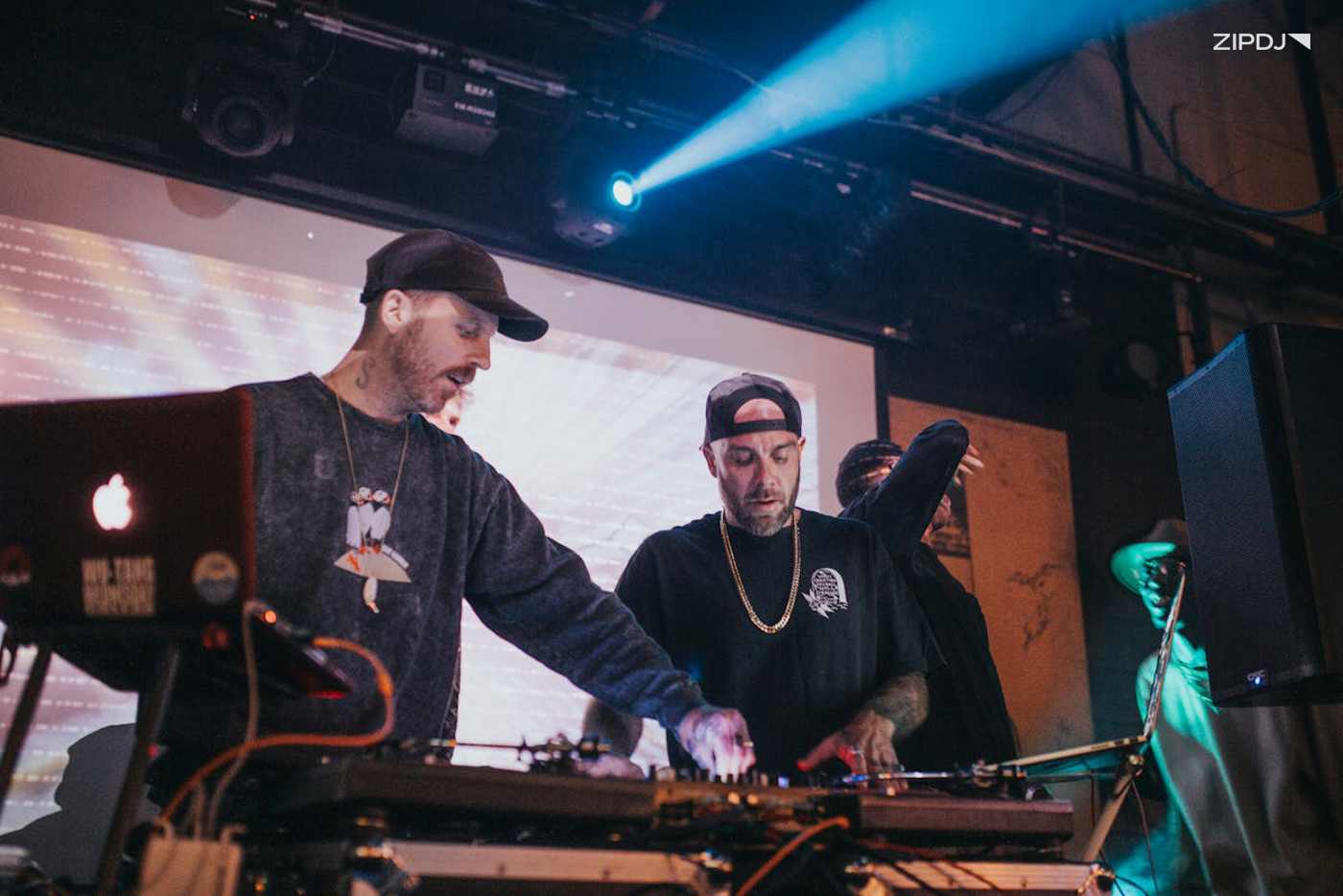What Is EDM Music? A Complete Guide to Electronic Dance Music

The world’s leading DJs have forged their careers by mixing various music genres that fall under the banner of electronic dance music.
With a fascinating history spanning decades and an evolution involving cutting-edge technology development, EDM music is more popular than ever.
In this article, we’ll discuss the key characteristics of electronic dance music, its historical journey, the many subgenres, and the leading DJs.

What Is EDM Music? A Complete Guide to Electronic Dance Music
Electronic dance music has become a vast industry, emerging in the 1970s and incorporating a range of production and DJing elements that are widely used today.
Let’s examine electronic dance music in detail, covering its core structural elements, key historical moments, and the genres and DJs who’ve defined its style.
Electronic Dance Music Structure
Electronic dance music spans many diverse genres, but most EDM producers use several notable structural elements when creating tracks.
These structural elements, influenced by the science of DJing and musical composition rules, form the foundation for EDM music.
Understanding how these elements are constructed and combined to create a unified music experience is essential to mastering the craft of DJing.
Here’s a breakdown of these core structural elements used in the music production process:
- 4/4 time signature: The 4/4 time signature forms the foundation from which all the other compositional elements are constructed. Arranged into bars, melodic elements, percussion, and vocals follow this outline throughout a track.
- 120 to 140 beats per minute: The beats per minute of EDM songs, or the tempo, serve as the heartbeat that drives the music forward. While the typical range is between 120 and 140 beats per minute, some electronic dance music genres, such as Hard House and Gabba, can be as high as 160 or above.
- Intro: The intro for EDM music is a simple introduction that leads into the main track, often made up solely of percussion and a bassline. DJs use this to assist with transitions when mixing from one track to the next, setting the pace for the overall track.
- Verse: The next section in the structure of electronic dance music is the verse, which introduces melodic elements and, in some cases, vocals. Here, the recognizable hooks that define the track are introduced, and the overall form takes shape.
- Buildup: One of the most defining elements of electronic dance music’s structure is the buildup, which DJs use to create anticipation on the dance floor. It uses sound design and rising elements to heighten the senses, cutting back on percussion in readiness for the final critical structural element, the drop.
- Drop: The drop is the point in an EDM song that hits the hardest and follows the buildup, bringing the heavy drums and basslines back to the fore and maximizing the track’s energy levels. DJs use the drop to get the crowd pumping, but it should be applied relatively sparingly for optimal impact.
Grasping these various elements can significantly improve your mixing skills, such as learning phrasing and mixing in key.
They’re also vital to understand if you’re considering branching out into production and creating your own EDM music to play in your sets.

A Brief History Of Electronic Dance Music (EDM)
The history of DJing is deeply intertwined with the evolution of electronic dance music, with roots that go way back to the early twentieth century.
It has been influenced by many other genres over the decades, influencing other genres such as pop music and hip-hop.
This history begins with the discovery of instruments capable of creating electronic sounds and their application by music producers through years of experimentation.
Let’s dive into the history of EDM in more detail, from its early roots and emergence as a force in the music industry to its role in contemporary culture.
The Early Pioneers Of Electronic Music
We’re beginning this brief history of EDM in 1897 with the invention of the Telharmonium, the first instrument powered by electricity.
This invention paved the way for the field of electroacoustics, which would be taken to new levels by Delia Derbyshire, the pioneer behind the sound design for Dr. Who.
By the 1960s, Robert Moog’s invention of the Moog synthesizer redefined music production forever, influencing artists such as Brian Eno and Kraftwerk.
Based in Germany, Kraftwerk essentially marked the origins of electronic dance music today, developing many core characteristics.
At the same time, radio disc jockeys profoundly influenced DJs’ roles as music curators and their ability to define the tastes of contemporary culture.
Disco’s Influence On EDM
The 1970s was a vibrant era for music genres, with funk, soul, and disco all emerging in force and becoming immensely popular among the masses.
Disco would profoundly impact the emergence of electronic dance music, thanks to the world of producers such as Giorgio Moroder and acts like The Bee Gees.
At the same time, the rise in prominence of record players and the development of the mixer made it possible for DJs to integrate music seamlessly.
This era also marked the birth of the DJ pool, which allowed DJs to access new music and build extensive libraries of tracks to perform on.
The introduction of drum machines developed by Roland, combined with other electronic instruments, marked the arrival of the dance sound.
The Rise Of House Music In The 1980s
By the early 1980s, electronic dance music had finally landed, thanks to the work of pioneers such as Frankie Knuckles and other Chicago-based DJs.
Chicago house would become a transformative moment in the music industry, marking the origins of production and DJ mixing techniques still used today.
Many of these mixing skills, notably the ability to beatmatch, have remained the same throughout the years since, with new complementary techniques introduced.
At the same time, early hip-hop expanded the possibilities of what DJs could achieve with two turntables and a mixer.
New Music Genres Of The 1990s
By the 1990s, there was a massive explosion in electronic dance music subgenres, partly due to the affordability of music production equipment.
Genres such as trance music led to the rise of dedicated clubs and festivals, laying the groundwork for modern events such as the Electric Daisy Carnival and Ultra Music Festival.
It was an era characterized by the rise of some of the most famous DJs of all time and big-name producers who dominated the charts.
Acts such as The Prodigy, The Chemical Brothers, and Fatboy Slim took electronic dance music into the mainstream and became household names.
The 1990s was a pivotal decade for the rave scene, with the birth of the rave scene and the rise of samplers revolutionizing EDM music production.
Mainstream EDM From The 2000s
By the early 2000s, new technology changed how DJs performed, with digital audio files and high-end DJ controllers emerging on the scene.
Affordable music production software, such as Ableton Live and Cubase, was also released, making it easier than ever to create EDM tracks.
Throughout this era, EDM continued to break into the mainstream music industry, with different genres continually emerging on the scene.
With the growth of the internet, streaming services and hosting platforms such as SoundCloud democratized DJing while fostering the ever-growing EDM community.
By the 2010s, some of the highest-paid DJs were hitting the EDM scene, and the genre impacted mainstream pop music acts worldwide.
Around this time, electronic dance music (EDM) became popular as an umbrella term for an eclectic selection of genres.

The Most Popular EDM Genres
With decades of history and thousands of producers experimenting with technology’s possibilities, it’s no surprise that electronic dance music has expanded to many genres.
EDM includes many of the best music genres DJs play in their sets, with many incorporating multiple dance genres to deliver an eclectic experience for audiences.
Here’s an overview of the most popular EDM genres played by DJs and insights into the subgenres that have emerged as EDM culture has evolved.
House Music
House music is the original EDM genre that launched the trend of electronic music production, and many subgenres have emerged over the years.
Electro house, deep house, acid house, and big room house are just a few offshoots the best house DJs and producers have created since the early 1980s.
Learning how to DJ house music is a great place to start if you’re new to DJing, as it covers the core mixing skills that must be mastered.
Techno Music
Techno music, which originated around the same time as the Chicago house music scene, has a long and illustrious history in the world of EDM.
Many of the best techno DJs emerged in the 1980s and 1990s, with Juan Atkins, Derrick May, and Kevin Saunderson leading the field.
The genres took the core production techniques found in house in a darker direction, shifting away from melodies and into atmospheric sound design.
Drum And Bass
While house and techno music both emerged in the United States, drum and bass has its roots in the UK dance scene of the 1990s.
Delivering a faster-paced approach to production and with breakbeat percussion, it’s one of the rawest styles of music in the EDM sphere.
There are subgenres within the drum and bass label that are more laid back, such as liquid drum and bass, while jungle ups the ante with more aggression.
Read more: Find out how to become a famous DJ.
Trance Music
As the name implies, trance music takes a more melodic and hypnotic approach to music with lush synths and a dreamy atmosphere.
It was hugely popular among DJs in clubs throughout the 1990s, with artists such as Armin van Buuren and Chicane among the most notable performers.
Trance music remains popular today, with trance festivals keeping the genre alive and kicking among its dedicated following.
Dubstep
One of the more recent additions to the EDM music scene is dubstep, which came from the South London club scene in the early 2000s.
Its emergence reflects the ever-changing music trends that EDM is renowned for, drawing on influences from drum and bass and dub music.
UK garage was also a significant influence on the creation of dubstep, notably through the use of broken beats and grime.
Intelligent Dance Music (IDM)
For a more thoughtful and intricate taste of EDM music, there’s the intelligent dance music scene pioneered by producers such as Autechre and Aphex Twin.
Intelligent dance music, which incorporates elements of ambient music, techno, and other genres, is a firm favorite among many EDM fans.
The genre has seen the release of many albums considered to be masterpieces, with production standards rarely matched in commercial EDM releases.
Read more: Launch your career with the best DJ booking agencies.
The Best EDM DJs
The EDM scene covers a wide range of genres, and there’s an extensive archive of mixes from a long list of influential DJs and music producers.
From the best old-school DJs who pioneered the birth of house music to the niche DJs working in obscure subgenres, they’ve left a lasting impression on EDM.
Here’s a brief overview of some of the best EDM DJs in the contemporary scene that have helped to define the culture and establish new trends:
- David Guetta: French DJ David Guetta has an impressive reputation in the EDM scene, with many hit tracks to his name, including the chart-topping success “I Gotta Feeling.”
- Daft Punk: Also heralding from France is the iconic house music duo Daft Punk, who dominated the charts on multiple occasions in the 1990s, notably with the tracks “Around the World” and “Da Funk.”
- Skrillex: Drawing on dubstep influences and making it something unique, Skrillex initially began his music career in a post-hardcore punk band before DJing EDM at the world’s leading music festivals.
- Steve Aoki: Multi-award-winning DJ Steve Aoki’s impressive career has seen him work with some of the leading artists in the music industry, with a reputation for delivering high-octane DJ sets.
- Swedish House Mafia: Swedish House Mafia’s prolific output has allowed them to dominate the club scene, comprised of members Steve Angello, Axwell, and Sebastian Ingrosso.
While these DJs dominate the commercial EDM space, many highly influential and renowned underground DJs exist outside the mainstream.
Some examples of respected DJs who have helped shape the underground scene include:
- Carl Craig: One of the founding artists behind the Detroit techno scene, Carl Craig has been producing music since the early 1990s and is known for incorporating jazz and house music into his productions.
- Floating Points: With his eclectic approach to music production and impressive live shows, Floating Points is a highly regarded experimental producer and DJ.
- Flying Lotus: Through his Brainfeeder label, Flying Lotus has released many singles and albums and achieved notoriety with his surreal animated movie Kuso.
- Four Tet: Four Tet’s discography is an outstanding example of an underground DJ who isn’t afraid to demonstrate his versatility and collaborate with other artists.
- Lone: Effortlessly switching between house, techno, and drum and bass, Lone is one of today’s most impressive techno producers.
With hundreds of other notable DJs working in the EDM field, there’s no shortage of talented performers for music fans to explore.

How To Make EDM Music: Techniques & Tools
Many of the biggest names in the EDM scene take their careers to the next level by becoming a DJ producer and making their own music.
It’s a great way to expand your skill set and earn more money by signing up to a record label and sharing your work with other DJs.
Whether you’re interested in house music or drum and bass, electronic music production follows a few core rules related to the structural elements discussed above.
If you’re considering entering the world of music production, here are the steps to get set up and complete your first track.
Invest In A Digital Audio Workstation
Music production requires a digital audio workstation (DAW) to sequence all of the track’s elements and master the audio.
There are many excellent DAW recording software options on the market, with Ableton, Pro Logic, and FL Studio among the most popular.
They can be daunting to use at first, but there are plenty of handy tutorials on YouTube that will help you to master the workflow and start building a track.
Explore ZIPDJ’s subscription pricing.
Establish Tempo & Program Drums
A good starting point when making EDM music is to begin with the drums, as these will act as a metronome to keep all other elements in line.
Start by setting the track’s tempo, then add a kick drum and build around this with other percussive elements such as hi-hats and snare drums.
If you want to save time, you can load complete drum loops that include a full pattern of drums and use these to learn how to arrange your own patterns.
Breaking loops down in a sample editor is an excellent way to learn the ropes before moving on to adding individual hits as you gain confidence in your production skills.
Add A Bassline
Once you’re happy with your drums and percussion, it’s time to introduce a bassline, which will also help you to establish the track’s key.
The bassline is where the track’s groove comes in, beefing up the music’s low-end frequencies and giving it a real sense of presence.
Writing a good bassline requires an interplay between the drums, particularly the kick drum, and giving the track a sense of style and character.
You can make it simple and pounding, as in techno music, or more melodic and upbeat, as is common in funky house tunes.
Check out these glowing ZIPDJ testimonials.
Bring In Synth Melodies
With your track’s key established in the bassline, you can build on this with more intricate melodic elements using synths.
Synths are incredibly versatile, with many different sounds, so it pays to experiment with settings until you find one with the right tone.
Most DAWs include an extensive library of synth presets, but don’t be afraid to play around with the parameters to find something unique.
Introduce chord patterns and add melodies to give your track a hook, using multiple synths to build an overall textured soundscape with depth and feeling.
Introduce Vocals & Samples
While not all EDM music uses vocals, some styles benefit from vocals by bringing a human element to the table, which can significantly help your EDM production.
A lot of electronic music also manipulates vocals, such as running it through a vocoder or other effects processing unit.
You can also use processed samples to introduce even more texture and variety to the arrangement, with many sample packs available online.
Tip: Find out how to get a DJ residency.
Apply Effects
Once your core track has been composed and arranged in the sequencer, you can introduce additional dynamic flavor by applying effects.
There are many excellent effects available in a DAW, with filters, reverb, chorus, and flanges all having their own specific applications.
Adding stereo pans to high-frequency percussions can open up a sense of space, while reverbs can make drums sound more dominant.
Again, experimentation is the key to getting great results, so play around with various effects on different track elements to see what you can achieve.
Mix & Master The Track
The last step in producing an EDM track is to mix and master it, ensuring that the drums, basslines, and other elements fit together in the mix.
You can use compression to help with the process and the EQ feature to check each element and fine-tune its sound.
While professional music producers typically use dedicated sound engineers for mastering, you can get impressive results using tools such as Audiolens.
New AI-powered tools are also emerging that can assist with mastering as part of your music production pipeline.
Sign up for ZIPDJ’s pool.
Summary
With decades of history and a deep relationship with the evolution of music technology, electronic dance music has become one of the defining elements of modern culture.
This article should inspire DJs looking to broaden their horizons and experiment with EDM songs from a range of genres and styles.
By venturing into new creative territory, the groundwork is laid for producing electronic dance music and influencing the genre’s future.
Not a member ?
Join Today for Unlimited Music Downloads. Visit zipdj.com for more information.



